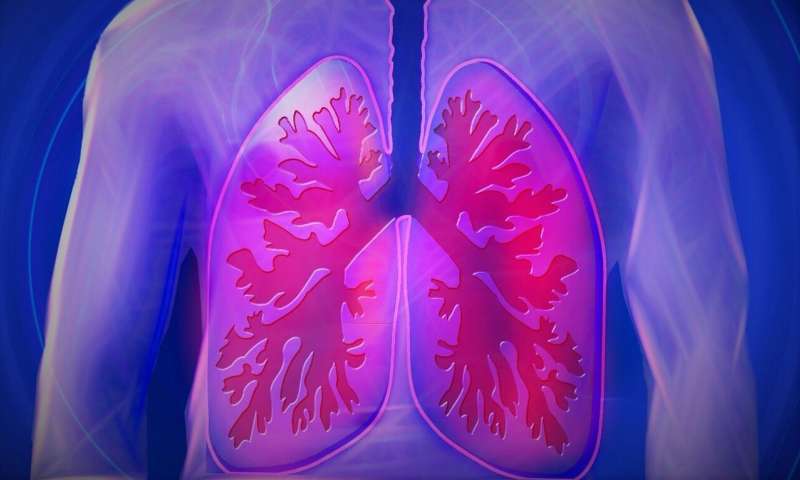
Researchers at the Radboud University Medical Center seem to have found an essential mechanism in the disease process of COVID-19, which has so far been overlooked. If the insight is correct, it probably has important consequences for the treatment of the disease. In an international collaborative effort it is now being investigated whether the new insights and treatments do indeed have an effect in practice.
An infection with the coronavirus COVID-19 is different from the flu or other more common viral diseases. Radboudumc researchers wondered what exactly happens in the case of a severe infection. Doctors recognize three clear phases. In the beginning, patients quickly become short of breath because of fluid in the lungs. About nine days after the infection an inflammatory reaction occurs in the lungs; the patient’s antibodies might attack the virus in the lungs, which can further aggravate the situation in the lung. Some of the patients who recover after a stay in the ICU develop thrombosis and scarring in the lungs due to the long-standing fluid, which makes recovery difficult. In short: it all begins with a fluid problem.
Vanishing ACE2 receptors
“We have been closely monitoring the COVID patients,” says Frank van de Veerdonk. “That first phase, during which the lungs fill up with fluid, CT scans of the lungs look bad and patients quickly experience shortness of breath due to the administration of fluid, is very characteristic. This image cannot be explained solely by the infection of the lungs. So we got the idea that the capillaries, which are the very small blood vessels, start to leak into the lungs during this process. That leakage causes the lungs problems, because they partly fill up.”
This observation was already made with SARS (a previous coronavirus infection that occurred in 2003), but no good explanation was available. Researchers from the Radboudumc now come up with a hypothesis, a theoretical explanation that makes the leakage plausible. Van de Veerdonk: “COVID-19 enters the lungs via the ACE2 receptor. The virus binds to the receptor, which then pulls it into the lung cell where the virus can multiply. In case of a massive infection, this process makes the ACE2 receptors disappear from the outside of the cell. With that, their function also disappears.”
Bradykinine makes blood vessels leak
ACE2 (angiotensin-converting enzyme 2) is known to play a role in maintaining blood pressure throughout the body, which is regulated by the RAAS, the renin-angiotensin-aldosterone system. The RAAS system, and thus ACE2, controls blood pressure by regulating vasodilatation and vasoconstriction. But ACE2 has another function, which up until now has remained out of the picture in coronavirus infections. Van de Veerdonk: “ACE2 keeps the substance bradykinin under control. Bradykinin makes blood vessels leak. We have good reason to believe that with COVID-19 infections we see exactly this effect: when the virus is introduced, ACE2 receptors disappear from the lung cells, giving bradykinine free rein in causing the small blood vessels to leak massively at the site of infection.”
Van de Veerdonk and colleagues recognize this phenomenon from another very rare disease: hereditary angioedema. People with this disease can suddenly develop swelling of, for example, hands, feet, abdomen or face. These swellings can persist for several hours, sometimes even days, after which they disappear just as quickly as they have developed. The cause of these swellings: leaking blood vessels due to too much bradykinin. Some side effects of ACE inhibitors, which are used against high blood pressure, are also very similar to symptoms seen with COVID-19. The dry cough, for example. And in rare cases, angioedema can also occur with ACE inhibitors.
Quick sharing and testing of the insights
The problems of vascular leakage can be aggravated by an inflammatory phase. This causes even more leakage and damage to the lungs. Anti-inflammatory drugs can have a potentially dampening effect here, and doctors and researchers all over the world are doing their best to select the most optimal drugs for this stage. In addition the long lasting vascular leakage and inflammation of the blood vessels will trigger the coagulation cascade leading to thrombosis and eventually scarring of the lungs. Interventions that are started early to treat this leakage have the capacity to prevent these serious complications and might be effective in keeping patients out of the ICU.
Source: Read Full Article
